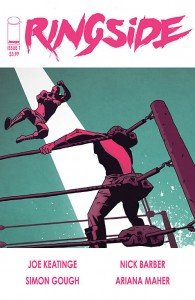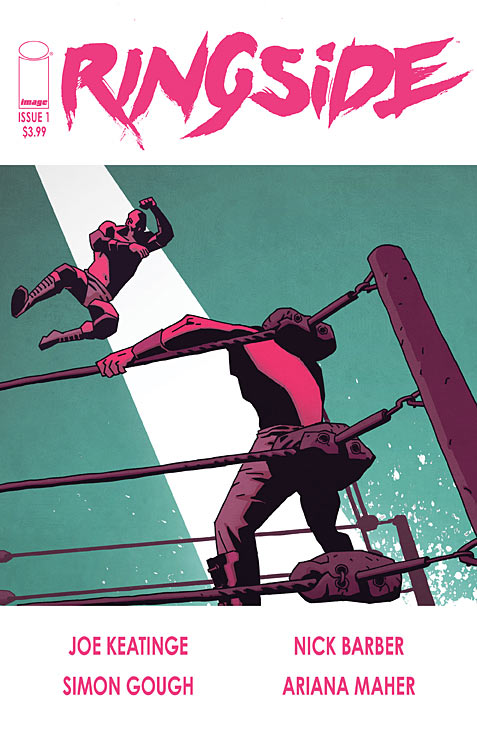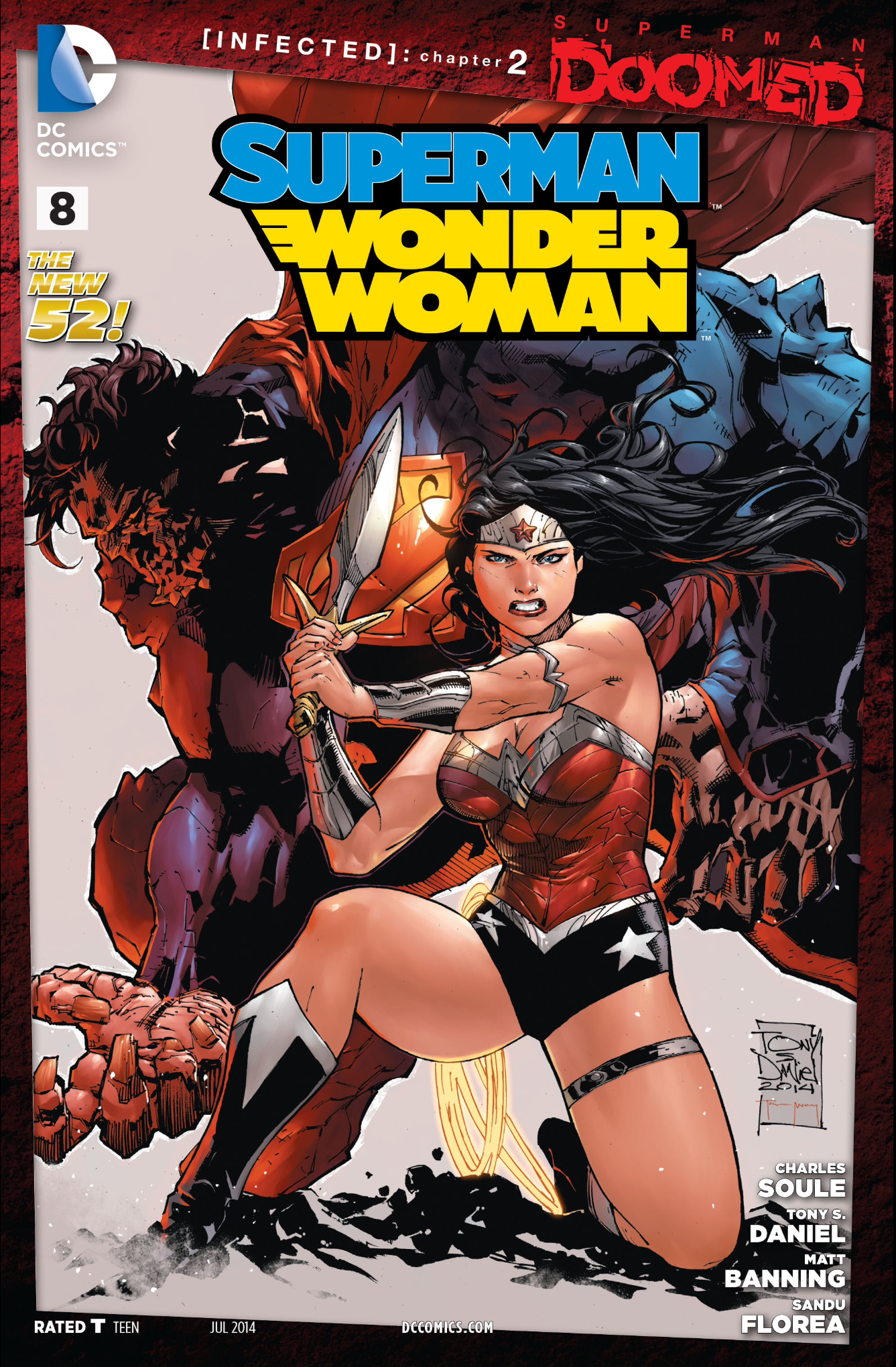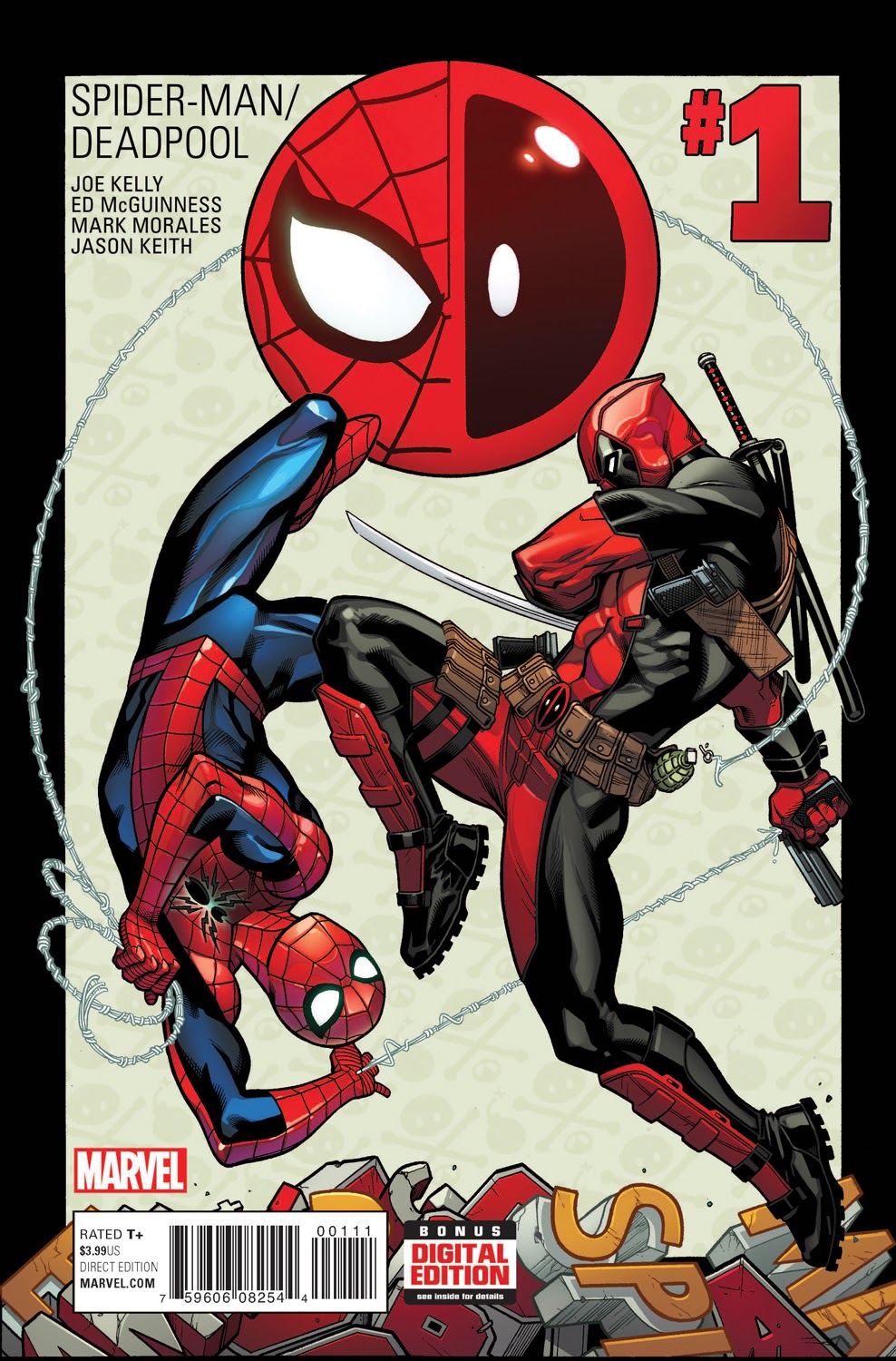Ringside #1
Writer – Joe Keatinge
Artist – Nick Barber
Colorist – Simon Gough
Letterer – Ariana Maher
Review by Joey Braccino
“THE WORLD’S DONE NOTHING BUT CHANGE, MY FRIEND. AND YOU HAVEN’T MOVED ON AT ALL.”

Equal parts The Wrestler and A History of Violence, Ringside #1 looks to combine the shady backstage machinations of professional wrestling with the brutal realities of aging and suburbia. While not entirely successful in balancing those origins, Joe Keatinge and Nick Barber do produce an intriguing first issue that might set up a promising series down the line.
The story of Ringside follows Dan “The Minotaur” Knossos, a former pro-wrestler who now works in Japan training new talent. At the start of the issue, Knossos leaves Japan to return to the States to find Teddy (for reasons still unknown). As Knossos makes his way back to his old stomping grounds, he interacts with his former manager, Andre, former neighbor, marine Amy, and two wrestlers who are still “in it.” Through these interactions, Keatinge tries to give a sense of the toll professional wrestling can have on the people in the industry—Dan is a sullen, solitary old man, whose hard jaw and grizzled face show nothing but weariness of the world; Andre is a get-rich-quick entrepreneur, still milking (or trying to milk) the licensing and images of his (and Dan’s) yesteryear fame to make money; Reynolds, the young wrestler Dan meets, is starry-eyed and naïve and off-put by Dan’s warnings to save money and maintain a life outside the ring.
In the arena of character and pathos, Keatinge captures the malaise and pain and politics of pro-wrestling. Not unlike Mickey Rourke’s character in The Wrestler, Dan Knossos is a superb protagonist, a mountain of a man whose quietude and somber eyes do a shoddy job of hiding the physical and mental duress he is in.
Of course, the issue takes a strange turn into the violent and pulpy late in the game when (mild spoilers!!!) Dan is jumped outside a bar and ordered to leave the country and forget about everything that happened. It’s a little too crime-thriller-y and pulpy for the suburban, workplace gloom of the first three quarters of the book. Dan’s response also pushes the book into strange territory, and the final image, perhaps intended to invoke a “this is a professional fighter” response, doesn’t do so because the question of “reality” is inherent in professional wrestling. It just seems like Keatinge wanted to write a crime book and set it in a wrestling book, but both sides were lost in the transposition. A little “have your cake and eat it, too.”
Visually, Nick Barber and Simon Gough deliver an engaging, blocky style reminiscent of Francesco Francavilla or Kris Anka. The sharp line work captures the hulking stature of these wrestlers well, but Barber and Gough do not have the detail work of those other artists, and faces and backgrounds sometimes lack any defining characteristics. I’m sure this was an aesthetic choice, but the result is often times glaring examples of faceless figures and flat images. Furthermore, the choreography of the few instances of in-ring action lack any sense of physical space—one dynamic double-page spread has a wrestler performing a moonsault (backwards somersault) off the turnbuckle onto… no one in particular??? Even the cover shows a manoeuver that doesn’t seem practical.
Again, for a book about pro-wrestling, Ringside barely moves the meter on anything fresh, and when it tries to move into new narrative territory, it departs dramatically from the tenor it establishes early in the book.
Verdict
Skip (for now). Keatinge and Barber’s Ringside could build into something really interesting as more issues allow for more space to balance the pro-wrestling world with the crime-thriller narrative. Dan “The Minotaur” Knossos makes for an engaging protagonist, but the first issue struggles slightly from inconsistent artwork and a meandering mission.











